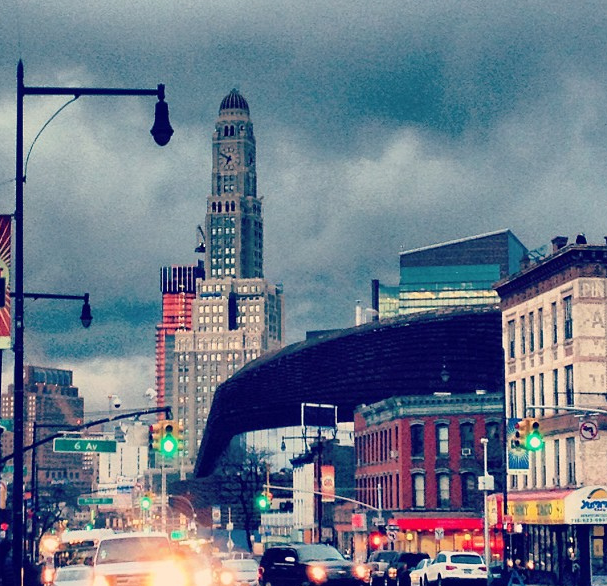
Streetsblog's recent article about how some north Brooklyn groups have “turned pro-car" in an effort to block residential loading zones pointed up an irony of progressive politics in New York.
“Not in My Back Yard” groups, such as “Save Our Brooklyn Neighborhoods” and their ilk, are not the natural allies of transportation activists. In fact, an alliance with pro-housing groups, such as my own Open New York, represents a far better choice for transportation activists who seek a safer, greener and more active city.
Density is the friend of transit, cyclists, and pedestrians. Building more housing in rich neighborhoods that are well-served by transit helps both transportation and housing.
Of course, the key question is: Where to put all the new housing? Ideally, neighborhoods such as Prospect Heights or Fort Greene, where the pro-parking rally was held this week. Such areas are close to the city’s core, easily walkable to Downtown Brooklyn, and have solid bike and transit access to Manhattan's jobs and amenities.
Plus, they’re already wealthy: Gentrification ceases to be a concern in neighborhoods where brownstones already sell for seven figures. In fact, adding housing in those areas will help prevent gentrification elsewhere. After all, the people who would live in the new apartments don't just vanish. Instead, they move outward, displacing settled residents in Crown Heights or Bushwick. Or, just as bad, they move to Houston or Atlanta, where they get around by car and double their carbon footprint.
Opponents of new housing level two arguments against these common-sense reasons to support more building in wealthy areas — and both, frankly, are bullshit. First (and slightly more seriously), some claim that new housing would "overwhelm the infrastructure." But that's simply a failure of imagination. Remember, people don't just vanish if you push them into a different neighborhood. They still ride the subways — just for longer distances.
Rather than making population growth somebody else's problem, we can simply build more infrastructure. We can:
- use the tax revenue from the new housing to augment service on the 10 separate subway lines that pass through these neighborhoods;
- install more Citi Bike docks and run more frequent bus service;
- build more schools and more retail to serve the greater number of residents.
We all love New York City. Let's build more of it, and let more people live here, rather than displacing residents and newcomers alike through high rents.
The second objection to growth is simply the cry of those who abhor change: "WAAHH! I don't like it!"
They complain that new buildings would "overwhelm our communities" or "look ugly."
You know what? Tough.
Living in a neighborhood shouldn’t give you veto power over who moves in or what kind of building they live in. We live in a time of climate crisis, and yet we're making it illegal to build more housing in our greenest cities, the places where it’s easiest to live without a car, and where apartments, rather than McMansions, are the norm. We're in a rent crisis, and yet we're choosing to preserve million-dollar brownstones rather than expand the housing supply. That’s nonsense.
What can we do about it?
Open New York is the local branch of the “Yes in My Back Yard” movement. We think that building more market-rate and subsidized housing is crucial to addressing our sky-high rents and endless sprawl. The YIMBY movement and the pro-transit/biking/pedestrian movements can and should have a shared vision — a vision of a growing, vibrant, affordable city that’s accessible to all who want to live here, where you can get around safely and not have to worry about excessive housing costs.
Rather than wondering what went wrong with a bunch of car-loving, change-hating "neighborhood groups," transportation activists should look to pro-housing advocates who share their worldview, and join both causes in a vision for a greater New York.
Dan Miller is a board member of Open New York. For more information, including a calendar of upcoming events, visit its website, or come to the next informational happy hour on Oct. 10.






